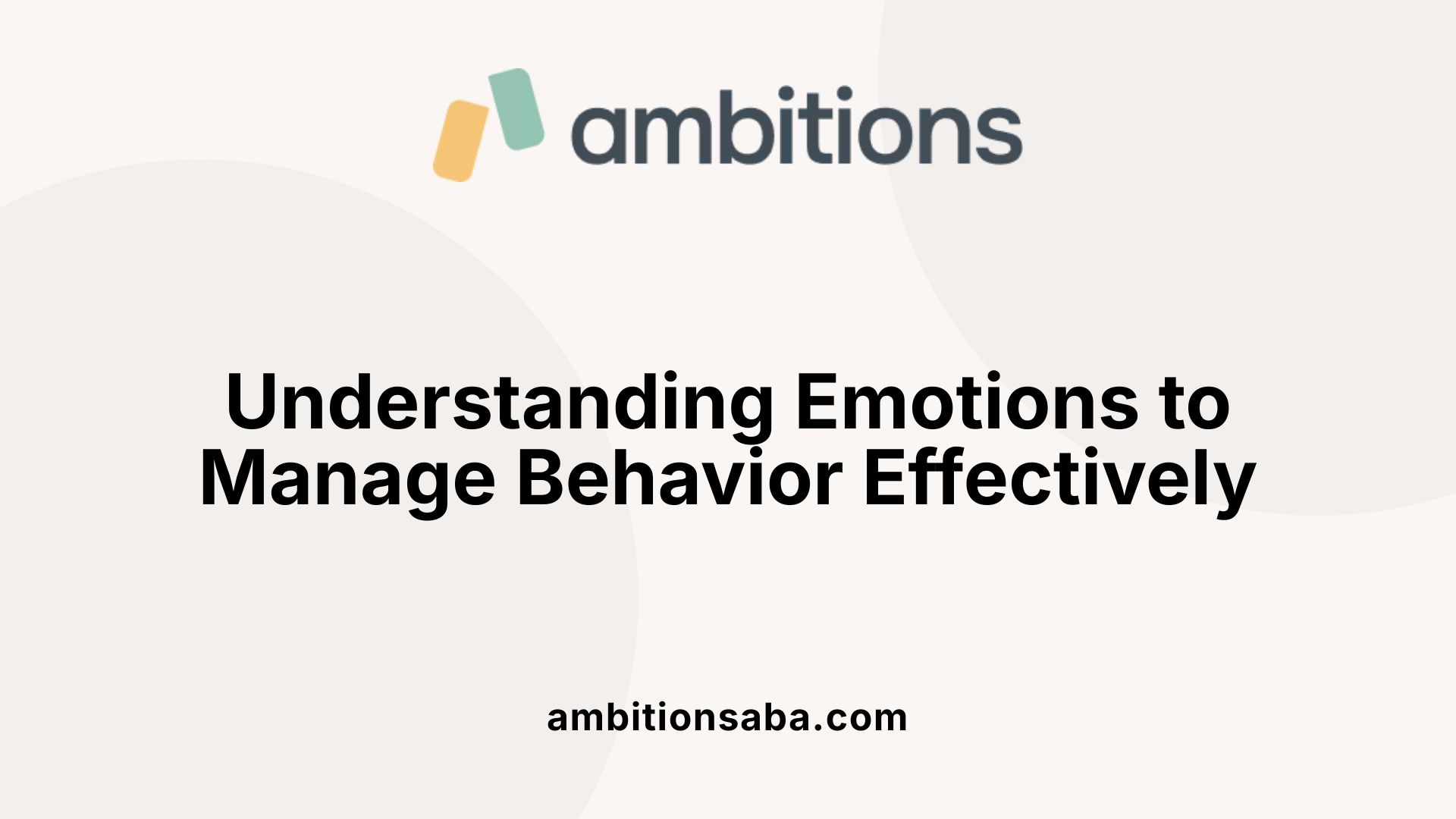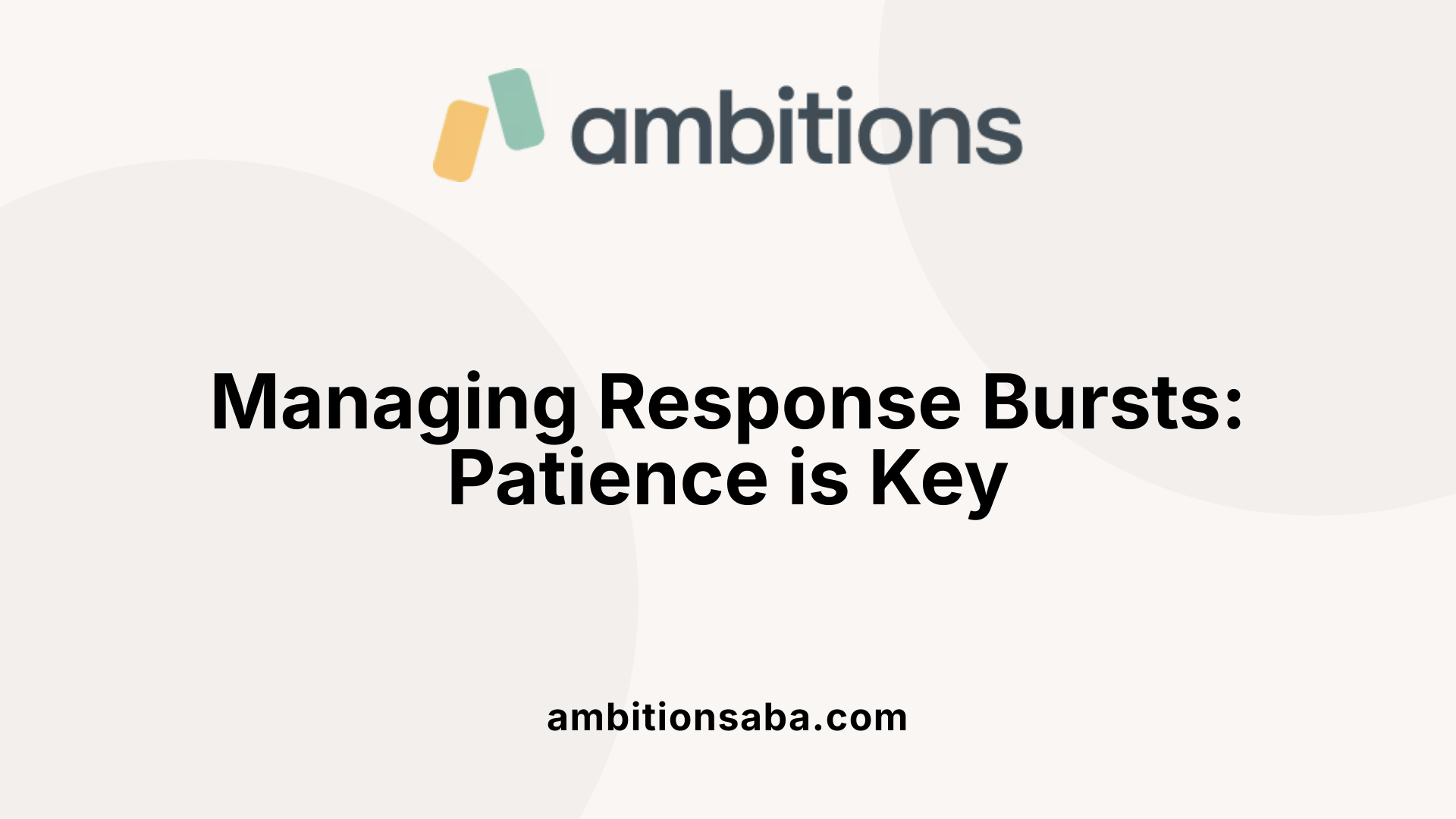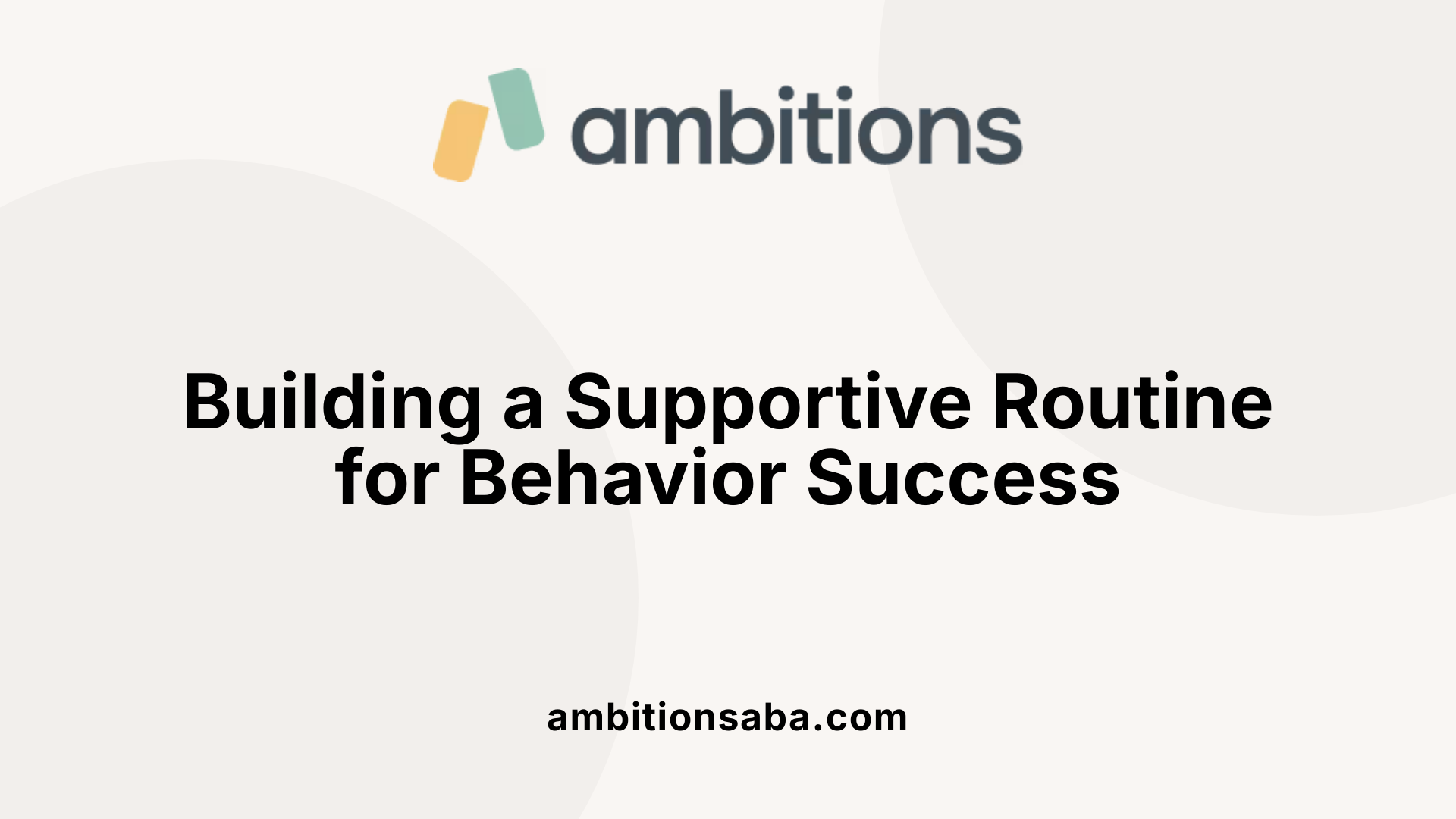Enhancing Social Understanding Through Behavioral Therapy
Understanding and Responding to Reinforcement Refusal
Children's refusal to accept reinforcement—whether in the form of rewards, attention, or consequences—is a common challenge faced by parents and educators. This behavior can be perplexing, especially when typical reinforcement strategies lose their effectiveness. This article explores comprehensive approaches to managing reinforcement refusal, emphasizing the importance of understanding underlying causes, employing positive discipline strategies, and adapting techniques to support emotional regulation and cooperation.
Assessing Reinforcer Effectiveness and Control Strategies

What are some strategies for managing a child's refusal to give back a reinforcer?
When a child refuses to return a reinforcer, the first step is to verify that the item or activity is truly reinforcing. This means it should genuinely encourage the behavior you aim to increase. Sometimes, what seems like a reward may not be motivating enough for the child, which can lead to reluctance.
Controlling access to the reinforcer can also be highly effective. For example, offering the reinforcer in small, manageable doses or managing how and when the child can access it helps in the exchange process. This controlled approach makes the child more willing to give up the reinforcer because it feels like a fair, manageable exchange.
Teaching the child to give up the reinforcer is a skill that benefits from gradual practice. Use consistent, controlled exchanges where the child learns to relinquish the reinforcer in response to specific cues or routines. Employing a timer that signals when access is over can also be helpful. When the timer goes off, it indicates that the child’s time with the reinforcer is up, supporting their understanding of when it’s appropriate to give up the item or activity.
Implementing these strategies requires patience, but they are effective in helping children learn to share, take turns, and build impulse control. Consistent reinforcement of these behaviors over time shapes positive cooperation and minimizes struggles during exchanges.
Addressing Emotional Underpinnings of Behavior

How can understanding emotional triggers help manage reinforcement refusal?
Recognizing that children's emotional outbursts and refusals often stem from unmet needs or difficulty managing big feelings allows caregivers to respond with empathy instead of punishment. When children refuse to give back a reinforcer or act out, it's usually because they are overwhelmed by emotions like frustration, anger, or anxiety.
Emotional coaching plays a central role in addressing these reactions. This approach involves helping children identify their feelings, articulate them, and learn how to regulate their emotions. By fostering a secure and understanding environment, adults can guide children through their emotional experiences, which reduces tantrums and stubborn refusals.
Instead of immediately resorting to consequences or commands, caregivers can acknowledge the child's feelings—say, by empathizing with their frustration or disappointment—and then gently redirect their behavior. For example, saying, "I see you're upset because you can't keep the toy right now," helps the child feel understood. This connection encourages cooperation and makes reinforcement strategies more effective.
Teaching children to manage big emotions is a gradual process that involves patience, consistency, and empathy. As children learn to articulate and cope with their feelings, their responses become calmer, making behavioral modifications smoother. This foundation of emotional awareness is essential for developing self-control and resilience, ultimately leading to more positive interactions and successful reinforcement practices.
Using Positivity and Consistency in Reinforcement

What are some best practices for applying reinforcement effectively when a child refuses it?
When a child refuses a reinforcer, such as a reward or punishment, it’s important to adjust your approach to maintain effectiveness. The best practices involve delivering positive reinforcers immediately after the specific behavior occurs to strengthen the connection between action and reward. This immediate feedback helps the child associate the reward with the desired behavior.
Using a variety of rewards keeps children motivated and prevents them from becoming accustomed to the same reinforcement. Changing up rewards ensures the child remains interested and engaged in the process of learning good behaviors.
Establishing structured routines and employing visual reminders like charts or checklists further enhance consistency. Visual aids help children understand what is expected of them and promote independence by reducing the need for constant reminders. These strategies together create a reliable and positive environment conducive to learning and behavioral growth.
Handling Response Bursts During Behavior Change

What should I do if my child's behavior temporarily worsens after changing reinforcement strategies?
When a child’s behavior seems to get worse initially after a change in reinforcement strategies, it is often because of a response burst. This phenomenon occurs when problematic behaviors temporarily increase in frequency or intensity as the child tests the new rules or boundaries.
Recognizing this as a normal part of the process is crucial. During this phase, patience and persistence are essential. It’s important not to give up or revert to old behaviors; instead, maintain consistent responses and reinforce positive actions.
Parents and caregivers should support their children by continuing to use the new behavior plan without frustration. Over time, this consistency helps the child understand that whining or tantrums do not result in rewards or avoidance of consequences.
Understanding that response bursts are temporary can prevent unnecessary stress and help maintain a calm, supportive environment. This persistence will ultimately lead to a reduction in unwanted behaviors as the child learns that new, appropriate ways of behaving are what bring positive outcomes.
Managing Response Bursts in Child Behavior Change
| Aspect | Explanation | Tips for Caregivers |
|---|---|---|
| Initial behavior worsening | Temporary increase in problematic behaviors after new reinforcement | Be patient and stay consistent |
| Patience and persistence | Continuously support and reinforce desired behavior despite setbacks | Remain calm and avoid punitive reactions |
| Understanding setbacks | Recognize setbacks as part of learning and growth | Encourage and praise efforts and improvements |
By understanding these dynamics, caregivers can better navigate the challenging initial stages of behavior modification. This approach fosters resilience and confidence, both for the child and the adult, in guiding behavior toward positive change.
Approaches to Handling Defiance and Power Struggles
How can educators and caregivers handle defiant or resistant children effectively?
Dealing with defiant children requires a thoughtful, respectful approach that emphasizes building positive relationships. First, it is important to foster trust and a sense of safety for the child. When children feel understood and valued, they are more likely to cooperate.
Using calm and respectful communication is essential. Instead of reacting emotionally or with confrontation, caregivers should speak softly, make eye contact, and clearly state expectations. This approach helps de-escalate emotions and prevents power struggles.
Offering choices can empower children and reduce resistance. For example, instead of commanding, "Clean up your toys now," try, "Would you like to put away your cars or your blocks first?" This gives the child a sense of control while guiding behavior.
Involving children in problem-solving encourages them to participate actively in their behavior management. Asking questions like, "What do you think we should do next?" makes them feel respected and responsible.
To avoid power struggles and public reprimands, educators and caregivers should remain calm and patient. If a child resists, it’s helpful to give them space and time to cool down. Redirecting attention, using visual cues, and maintaining consistent routines help create predictable environments that reduce resistance.
Overall, managing defiance effectively involves a mix of respectful communication, offering choices, routine building, and de-escalation strategies. These techniques promote cooperation, help children develop self-control, and strengthen the trust within caregiver-child relationships.
Responding to Rejection of Help and Rules
How should caregivers respond when a child refuses to accept help or respond to rules?
When children refuse to accept help or ignore rules, it’s essential for caregivers to stay calm and patient. Reacting with frustration or anger can escalate the situation, making the child more resistant.
Providing clear, simple instructions helps children understand what is expected of them. Using a reassuring tone and validating their feelings lets the child know their emotions are acknowledged, fostering trust and openness.
Offering controlled choices is an effective strategy. For example, instead of demanding, "Put on your shoes now," a caregiver might say, "Would you like to wear the red shoes or the blue shoes?" This gives children a sense of control and reduces defiance.
Reinforcing a sense of safety and consistency is vital. When rules are explained calmly and enforced gently but firmly, children feel secure, which increases their willingness to cooperate over time.
Building a supportive relationship also plays a fundamental role. Showing understanding and compassion helps children feel respected, encouraging them to respond positively to guidance rather than resisting it.
Practical tips for caregivers:
- Remain patient and avoid reacting emotionally.
- Use age-appropriate, clear commands.
- Offer choices to promote independence.
- Consistently enforce boundaries with kindness.
- Reinforce positive behavior with praise and encouragement.
Overall, addressing refusal to accept help or follow rules requires a mix of patience, clear communication, and building a trusting connection, guiding children gently toward responsible behavior.
Discipline Methods: Time-Outs and Ignoring Disrespectful Behavior
What are best practices for applying disciplinary methods like time-outs or ignoring disrespectful behavior?
Effective use of discipline involves understanding the purpose behind strategies like time-outs and ignoring disrespect. Time-outs should be brief and serve as a negative consequence to help the child understand that disrespectful or disruptive behavior is unacceptable. It is essential to administer time-outs calmly, without engaging or arguing with the child, which helps maintain consistency and safety.
If a child leaves the designated time-out area prematurely, they should be guided back without fuss, ensuring the process remains focused and non-confrontational. This reinforces the idea that rules have boundaries and are to be followed.
When dealing with minor disrespect or misbehavior, ignoring these acts can be a powerful tool. By not giving attention to undesired behaviors, parents and teachers prevent reinforcement that might encourage the child to repeat them.
Simultaneously, focusing on reinforcing positive and respectful behaviors through praise and attention encourages children to repeat those behaviors. Using clear, calm instructions, establishing routines, and promptly acknowledging good behavior all contribute to creating a respectful and cooperative environment.
Overall, the key is consistency, patience, and a calm demeanor, which help children learn appropriate ways to communicate and behave, reducing the need for more severe discipline strategies.
This approach, supported by research, emphasizes emotional connection and respectful boundaries as foundations for effective discipline. It fosters an environment where children learn self-control and respect through gradual guidance and positive reinforcement, leading to better behavioral outcomes.
Responding When Discipline or Consequences Fail
How should one respond when a child does not respond to discipline or consequences?
When a child does not seem to respond to discipline, it is crucial to first ensure that the rules are clear and consistently enforced. Children need to understand what is expected of them and see that consequences follow their behaviors reliably. This consistency helps build a sense of security and predictability, which can improve compliance.
In addition to clarity, employing positive reinforcement is highly effective. Recognize and praise good behavior immediately and specifically, which encourages children to repeat those actions. When appropriate, use age-appropriate consequences such as brief time-outs, privilege removal, or natural consequences relevant to their actions. These methods teach responsibility while respecting the child's developmental level.
Another vital aspect is building a trusting relationship with the child. When children feel understood and supported, they are more likely to cooperate. Teaching emotional regulation skills also plays a significant role. Helping children learn to identify and manage their feelings reduces emotional outbursts and resistance.
If non-responsiveness persists despite these efforts, seeking support from a professional, such as a psychologist familiar with behavioral strategies and parent training, can provide additional guidance and tailored interventions. Overall, combining clear rules, positive reinforcement, emotional support, and professional help if needed creates a comprehensive approach to challenging behaviors.
Creating a Supportive Environment and Routine

What are some general positive discipline strategies for managing child behavior?
Effective positive discipline involves establishing a structured environment where expectations are clear and consistent. Parents and caregivers should set age-appropriate boundaries, communicate openly, and focus on teaching children the skills they need rather than merely punishing undesirable behavior.
Building trusting relationships is fundamental. Showing empathy, listening actively, and modeling respectful behavior help children feel secure and understood. This emotional connection motivates children to cooperate and learn self-control.
Using routines and visual supports like charts or checklists makes daily tasks predictable, reducing resistance and helping children understand expectations. Visual cues serve as reminders and foster independence.
Reinforcing positive behavior through praise, rewards, and time-ins encourages children to repeat those behaviors. Immediate, specific, and genuine praise can be very effective.
When children exhibit challenging behaviors, it’s best to avoid physical punishment or shaming because these approaches can harm the relationship and often do not lead to lasting change.
Instead, focus on guiding children through problem-solving, offering choices when appropriate, and helping them understand the consequences of their actions. Consistency, patience, and a supportive attitude are vital for fostering cooperation.
Overall, these strategies promote a nurturing environment that teaches children responsibility and self-regulation, leading to healthier relationships and better development.
The Role of Parental and Professional Support in Treatment
What are effective strategies for managing a child's refusal of reinforcement?
When a child refuses to accept reinforcement, it can be challenging for parents and caregivers. One effective approach is to identify emotional triggers such as frustration, anxiety, or anger that might cause the refusal. Recognizing these underlying feelings allows adults to respond with empathy and patience.
Using positive reinforcement immediately after a desirable behavior increases the likelihood that the child will repeat that behavior. Timing is crucial—delivering rewards right after the behavior helps establish a clear connection.
Ignoring minor misbehavior is another important strategy. Instead of giving attention to small disruptions, focus on reinforcing positive actions. Visual supports like charts or checklists can serve as reminders and promote independence.
Providing children with choices during activities can empower them and reduce resistance. For example, asking if they would like to do a task now or later allows for some control, which can lessen oppositional behavior.
Maintaining a calm and composed attitude is vital, especially during challenging moments. Children are sensitive to parental emotions, and calmness can help de-escalate resistance.
Furthermore, working closely with families and professionals, such as therapists or behavioral specialists, enhances the effectiveness of strategies. Supportive coaching and consistent routines create a structured environment that fosters positive behavioral change.
In summary, managing a child's refusal involves understanding emotional triggers, timely reinforcement, visual aids, choices, and a collaborative support network. These approaches collectively help children learn to accept reinforcement and improve overall behavior.
Moving Forward with Confidence
Navigating reinforcement refusal requires understanding the child's emotional and developmental needs, employing a variety of respectful and consistent strategies, and fostering a supportive environment. Patience, persistence, and compassion are vital as children learn to regulate their emotions, accept guidance, and develop self-control. By integrating these approaches, caregivers and educators can turn challenging moments into opportunities for growth and positive transformation.
References
- What Do I Do When They Won't Give Back the Reinforcer?
- Complete Guide to Managing Behavior Problems - Child Mind Institute
- For parents: "My kid doesn't respond to rewards and punishments."
- When Children Are Defiant | Responsive Classroom
- Getting Strong-Willed Kids To Cooperate without Punishment
- What to do When Positive Reinforcement Isn't Working - May Institute
- Child Refuses To Do Anything At Home? | Lori Abosch
- My 5-year-old doesn't listen to me and is disrespectful.
- Positive Reinforcement for Kids: 11+ Examples for Parents
- Oppositional defiance disorder: When your kid isn't just 'difficult'

